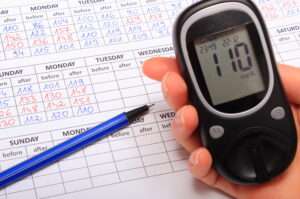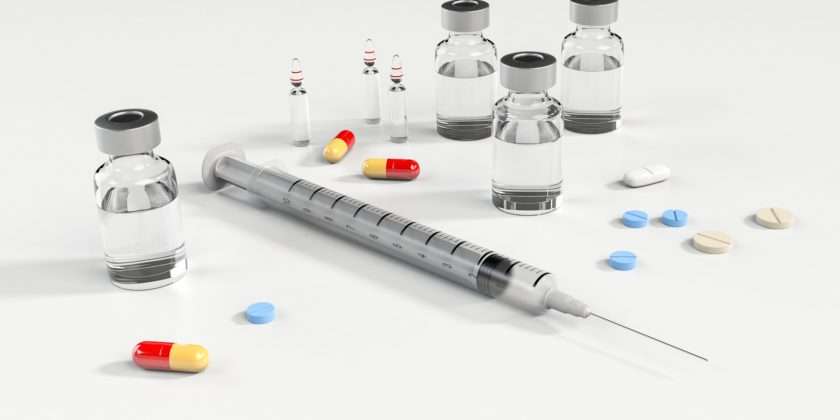An estimated 30.3 million1 people in the United States, or 9.4 percent of the population, have diabetes. About one in four people with diabetes don’t know they have the disease. An estimated 84.1 million Americans aged 18 years or older have prediabetes2. Jay Harold wrote this post, “, Insulin, Medicines, & Other Diabetes Treatments” to give you more options in reducing the effects of this terrible disease.
Taking insulin or other diabetes medicines is often part of treating diabetes. Along with healthy food choices and physical activity, medicine can help you manage the disease. Some other treatment options are also available.
What medicines might I take for diabetes3?
The medicine you take will vary by your type of diabetes and how well the medicine controls your blood glucose levels, also called blood sugar. Other factors, such as your other health conditions, medication costs, and your daily schedule may play a role in what diabetes medicine you take.
Type 1 diabetes
If you have type 1 diabetes, you must take insulin because your body no longer makes this hormone. You will need to take insulin several times during the day, including with meals. You also could use an insulin pump, which gives you small, steady doses throughout the day.
Type 2 diabetes
Some people with type 2 diabetes can manage their disease by making healthy food choices and being more physically active. Many people with type 2 diabetes need diabetes medicines as well. These medicines may include diabetes pills or medicines you inject under your skin, such as insulin. In time, you may need more than one diabetes medicine to control your blood glucose. Even if you do not take insulin, you may need it at special times, such as during pregnancy or if you are in the hospital.
Gestational diabetes
If you have gestational diabetes, you should first try to control your blood glucose level by making healthy food choices and getting regular physical activity. If you can’t reach your blood glucose target, your health care team will talk with you about diabetes medicines, such as insulin or the diabetes pill metformin, that may be safe for you to take during pregnancy. Your healthcare team may start you on diabetes medicines right away if your blood glucose is very high.
No matter what type of diabetes you have, taking diabetes medicines every day can feel like a burden sometimes. You may also need medicines for other health problems, such as high blood pressure or high cholesterol, as part of your diabetes care plan. View resources that may help you manage your medication plan.

What are the different types of insulin?
Several types of insulin are available. Each type starts to work at a different speed, known as “onset,” and its effects last a different length of time, known as “duration.” Most types of insulin reach a peak, which is when they have the strongest effect. Then the effects of the insulin wear off over the next few hours or so.
Source: Insulin basics. American Diabetes Association website. Last edited 2015. Accessed August 25, 2016.
Types of Insulin and How They Work
Insulin type How fast it starts to work (onset) When it peaks How long it lasts (duration)
Rapid-acting About 15 minutes after injection 1 hour 2 to 4 hours
Short-acting, also called regular Within 30 minutes after injection 2 to 3 hours 3 to 6 hours
Intermediate-acting 2 to 4 hours after injection 4 to 12 hours 12 to 18 hours
Long-acting Several hours after injection Does not peak 24 hours; some last longer
The chart above gives averages. Follow your doctor’s advice on when and how to take your insulin. Your doctor might also recommend premixed insulin, which is a mix of two types of insulin. Some types of insulin cost more than others, so talk with your doctor about your options if you’re concerned about cost. Read about financial help for diabetes care.
What are the different ways to take insulin?
The way you take insulin may depend on your lifestyle, insurance plan, and preferences. You may decide that needles are not for you and prefer a different method. Talk with your doctor about the options and which is best for you. Most people with diabetes use a needle and syringe, pen, or insulin pump. Inhalers, injection ports, and jet injectors are less common.
Needle and syringe
You’ll give yourself insulin shots using a needle and syringe. You will draw up your dose of insulin from the vial, or bottle, into the syringe. Insulin works fastest when you inject it in your belly, but you should rotate spots where you inject insulin. Other injection spots include your thigh, buttocks, or upper arm. Some people with diabetes who take insulin need two to four shots a day to reach their blood glucose targets. Others can take a single shot.

Insulin shots involve drawing insulin from a vial into a syringe and then injecting it under your skin.
Pen
An insulin pen looks like a pen but has a needle for its point. Some insulin pens come filled with insulin and are disposable. Others have room for an insulin cartridge that you insert and then replace after use. Insulin pens cost more than needles and syringes, but many people find them easier to use. An insulin pen is a convenient way to take insulin.
Pump
An insulin pump is a small machine that gives you small, steady doses of insulin throughout the day. You wear one type of pump outside your body on a belt or in a pocket or pouch. The insulin pump connects to a small plastic tube and a very small needle. You insert the needle under your skin, and it stays in place for several days. Insulin then pumps from the machine through the tube into your body 24 hours a day. You also can give yourself doses of insulin through the pump at mealtimes. Another type of pump has no tubes and attaches directly to your skin, such as a self-adhesive pod.
Photo of a woman holding an insulin pump with the tube connected to a patch on her stomach, where the needle is inserted.
Insulin pumps deliver insulin 24 hours a day.

Inhaler
Another way to take insulin is by breathing powdered insulin from an inhaler device into your mouth. The insulin goes into your lungs and moves quickly into your blood. Inhaled insulin is only for adults with type 1 or type 2 diabetes.
Injection port
An injection port has a short tube that you insert into the tissue beneath your skin. On the skin’s surface, an adhesive patch or dressing holds the port in place. You inject insulin through the port with a needle and syringe or an insulin pen. The port stays in place for a few days, and then you replace the port. With an injection port, you no longer puncture your skin for each shot—only when you apply a new port.
Jet injector
This device sends a fine spray of insulin into the skin at high pressure instead of using a needle to deliver the insulin.
What oral medicines treat type 2 diabetes?
You may need medicines along with healthy eating and physical activity habits to manage your type 2 diabetes. You can take many diabetes medicines by mouth. These medicines are called oral medicines.
Most people with type 2 diabetes start medical treatment with metformin pills. Metformin also comes as a liquid. Metformin lowers the amount of glucose that your liver makes and helps your body use insulin better. This drug may help you lose a small amount of weight.
Other oral medicines act in different ways to lower blood glucose levels. You may need to add another diabetes medicine after a while or use a combination treatment. Combining two or three kinds of diabetes medicines can lower blood glucose levels more than taking just one.

What other injectable medicines treat type 2 diabetes?
Besides insulin, other types of injected medicines are available. These medicines help to keep your blood glucose level from going too high after you eat. They may make you feel less hungry and help you lose some weight. Other injectable medicines are not substitutes for insulin. Learn more about noninsulin injectable medicines.
What should I know about the side effects of diabetes medicines?
Side effects are problems that result from a medicine. Some diabetes medicines can cause hypoglycemia, also called low blood glucose, if you don’t balance your medicines with food and activity.
Ask your doctor whether your diabetes medications can cause hypoglycemia or other side effects, such as upset stomach and weight gain. Take your diabetes medicines as your health care professional has instructed you, to help prevent side effects and diabetes problems.
Do I have other treatment options for my diabetes?
When medicines and lifestyle changes are not enough to manage your diabetes, a less common treatment may be an option. Other treatments include bariatric surgery for certain people with type 1 or type 2 diabetes, and an “artificial pancreas” and pancreatic islet transplantation for some people with type 1 diabetes.
Bariatric surgery
Also called weight-loss surgery or metabolic surgery, bariatric surgery may help some people with obesity and type 2 diabetes lose a large amount of weight and regain normal blood glucose levels. Some people with diabetes may no longer need their diabetes medicine after bariatric surgery. Whether and for how long blood glucose levels improve seems to vary by the patient, type of weight-loss surgery, and amount of weight the person loses. Other factors include how long someone has had diabetes and whether or not the person uses insulin.
Recent research suggests that weight-loss surgery also may help improve blood glucose control in people with type 1 diabetes who are obese.
Researchers are studying the long-term results of bariatric surgery in people with type 1 and type 2 diabetes.

Artificial Pancreas
The NIDDK has played an important role in developing “artificial pancreas” technology. An artificial pancreas replaces manual blood glucose testing and the use of insulin shots or a pump. A single system monitors blood glucose levels around the clock and provides insulin or a combination of insulin and a second hormone, glucagon, automatically. The system can also be monitored remotely, for example by parents or medical staff.
In 2016, the FDA approved a type of artificial pancreas system called a hybrid closed-loop system. This system tests your glucose level every 5 minutes throughout the day and night, and automatically gives you the right amount of insulin.
You still need to manually adjust the amount of insulin the pump delivers at mealtimes. But, the artificial pancreas may free you from some of the daily tasks needed to keep your blood glucose stable—or help you sleep through the night without the need to wake and test your glucose or take medicine.
The hybrid closed-loop system is expected to be available in the U.S. in 2017. Talk with your healthcare provider about whether this system might be right for you.
The NIDDK has funded several important studies on different types of artificial pancreas devices to better help people with type 1 diabetes manage their disease. The devices may also help people with type 2 diabetes and gestational diabetes.
Pancreatic islet transplantation
A Pancreatic islet transplantation procedure is an experimental treatment for poorly controlled type 1 diabetes. Pancreatic islets are clusters of cells in the pancreas that make the hormone insulin. In type 1 diabetes, the body’s immune system attacks these cells. A pancreatic islet transplant replaces destroyed islets with new ones that make and release insulin. This procedure takes islets from the pancreas of an organ donor and transfers them to a person with type 1 diabetes. Because researchers are still studying pancreatic islet transplantation, the procedure is only available to people enrolled in research studies. Learn more about islet transplantation studies.
Jay Harold hopes you enjoyed this post, “Insulin, Medicines, & Other Diabetes Treatments”. Remember that an estimated 84.1 million Americans aged 18 years or older have prediabetes.
Please Share it and read more about Jay Harold here. Please take this advice from Muhammad Ali and give back to others. “Service to others is the rent you pay for your room here on earth.”




